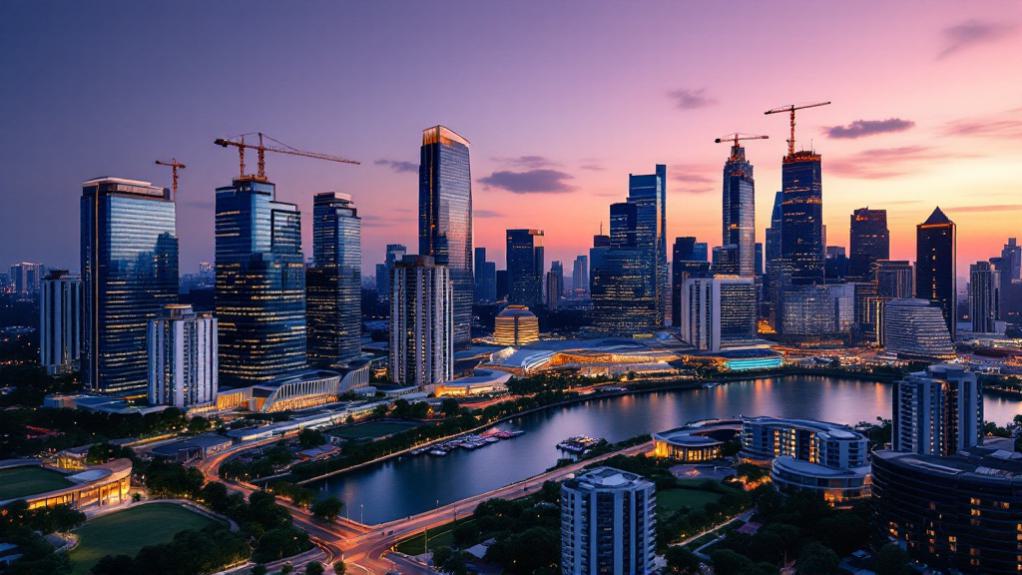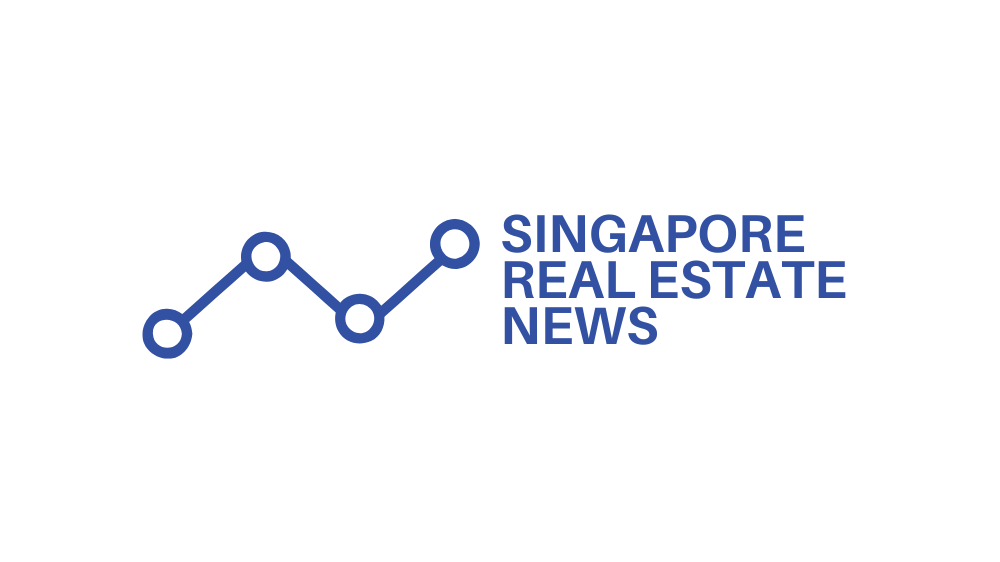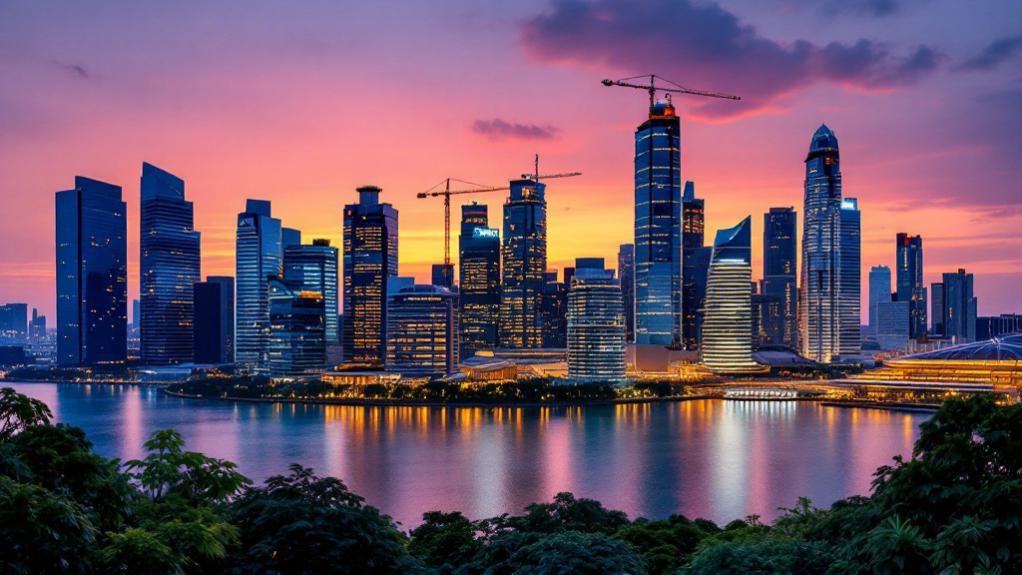Singapore’s real estate market in 2025 shows moderate growth trajectories across sectors, with private housing prices projected to rise 1-2% and HDB resale prices increasing 3-5%. Economic factors, including GDP growth forecast at 1-3% and manufacturing sector recovery, will influence market performance. Despite geopolitical tensions, Singapore remains a top investment destination in Asia-Pacific, with preferences for quality properties near amenities and transport hubs. Further exploration reveals nuanced sector-specific trends that shape investment opportunities.

As Singapore navigates through a complex web of domestic and international economic challenges, the real estate market is poised to demonstrate resilience with moderate growth trajectories across various sectors in 2025. The nation’s GDP growth forecast of 1-3% represents a deceleration compared to the 4.0% year-on-year expansion observed in 2024, influenced primarily by protectionist policies and persistent geopolitical tensions.
Nevertheless, the manufacturing sector’s recovery is expected to sustain momentum into early 2025, providing a stabilizing effect on the broader economy.
The residential property segment presents promising indicators, with private housing prices projected to increase by 1-2% and HDB resale prices anticipated to rise more robustly at 3-5%. This positive trend is partially attributable to improved buying sentiment resulting from lower mortgage rates, encouraging developers to proceed with planned launches throughout 2025. The Housing Index has reached an all-time high of 209.40 points in Q4 2024, confirming the strong upward trajectory in the property market.
Singapore’s residential market shows resilience, with private home prices expected to grow 1-2% while HDB resale prices could climb 3-5% amid favorable mortgage conditions.
Simultaneously, the rental market exhibits signs of stabilization after previous fluctuations.
Office sector dynamics reveal modest growth expectations for Core CBD (Grade A) rents, supported by improvements in take-up rates and occupancy levels observed in Q4 2024. However, concerns persist regarding upcoming lease expiries and low precommitment levels, though limited medium-term supply and the continued flight to quality trend may counterbalance these challenges.
The industrial and logistics sector forecasts uneven growth across manufacturing clusters, with the JS-SEZ initiative attracting substantial investments and reinforcing Singapore’s position as an advanced manufacturing hub. Global developments like Red Sea disruptions have notably impacted supply chains and tempered expansionary demand in 2024.
Retail properties demonstrate strong expansionary appetite from retailers, bolstered by tourism’s complete recovery to pre-COVID levels and below-historical-average future supply supporting rent growth.
From an investment perspective, Singapore maintains its position among the top three investment destinations in the Asia-Pacific region, with transaction volumes expected to continue their recovery pattern.
Market trends indicate sustained preference for quality properties, particularly those with proximity to amenities and transportation hubs, though rising concerns over resale flat market prices and potential confusion regarding post-GFA harmonization sizes warrant attention from market participants. The implementation of higher stamp duties for foreign buyers has noticeably shifted market focus toward OCR and RCR regions, creating new opportunities for local buyers and permanent residents.
Frequently Asked Questions
How Will Interest Rates Affect Housing Affordability in 2025?
Projected interest rate reductions in 2025, with mortgage rates expected to stabilize between 2-3%, will positively impact housing affordability metrics.
Lower borrowing costs will enhance loan eligibility parameters, allowing buyers to leverage CPF contributions more effectively against property acquisitions.
However, persistent supply-demand imbalances will maintain upward pressure on property valuations, particularly affecting lower-income purchasers despite the improved financing environment.
Meanwhile, mass-market segments may experience moderated price appreciation.
What Government Cooling Measures Might Be Introduced Next Year?
In 2025, Singapore may implement several additional cooling measures, including a possible first-time ABSD for Singaporean buyers purchasing properties above S$1 million.
Further reductions in LTV limits, and extended wait-out periods for private property owners may also be introduced.
The government, while monitoring the effects of existing interventions, might introduce stricter income requirements for HDB purchases and ownership caps for investment properties, especially if the current 9.6% rise in HDB resale prices continues its upward trajectory.
Which Emerging Neighborhoods Offer the Best Investment Potential?
Jurong Lake District presents superior investment potential, with its second CBD status and projected 20% price appreciation within five years.
Woodlands Regional Centre offers substantial growth prospects, particularly given its strategic position near Malaysia and anticipated 15-20% capital appreciation by 2025.
Punggol’s digital transformation and waterfront appeal position it favorably, while Paya Lebar’s mixed-use redevelopment, with 12 million square feet of planned commercial space, shows promising rental yields approaching 4-5%.
How Will Foreign Investment Restrictions Impact Luxury Property Prices?
The 60% ABSD has greatly altered luxury property dynamics, evidenced by the 70% drop in foreign transactions and shift in buyer demographics.
Despite these restrictions, CCR prices have maintained modest growth (3.5% in 2024), albeit at a slower pace than OCR developments.
The gap between CCR and RCR has narrowed to 30%, as local HNWIs have increased their market share to 70%.
Analysts project continued but tempered price appreciation of 2-4% for 2025.
Will HDB Resale Flats Outperform Private Condominiums in Value Growth?
HDB resale flats are projected to outperform private condominiums in value growth for 2025, with forecasted appreciation of 4-6% compared to 1-2% for private properties.
This divergence is attributable to the greatly reduced supply of HDB flats reaching Minimum Occupation Period in 2025—only 6,974 units, the lowest since 2014—coupled with anticipated interest rate reductions and sustained demand from first-time homebuyers seeking more affordable housing options.





